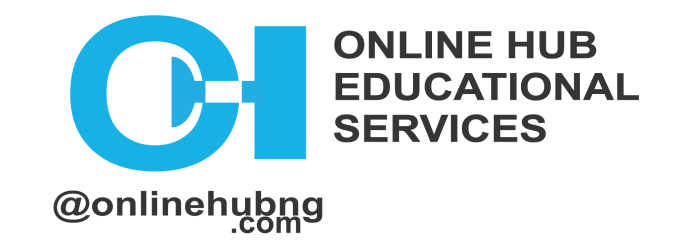Teachers have a lot to manage from class schedules, lesson plans, materials, students, just to name a few. Keeping track of all these can be daunting, but there are a few ways to help teachers stay organized by using Trello.
- General To-Do List
A common use case for Trello is keeping track of all your tasks and to-dos. Teachers have a lot to keep track of so Trello can give you one home to store everything you have to do.
You can organize your Trello board in a couple of different ways, but the most common way is a “To Do”, “Doing”, and “Done” list structure. You can also have a list for the different time periods in which you want to accomplish those tasks (such as Today, This Week, This Month).

You can add labels to each card to categorize your tasks (such as grouping them by class or by subject). You can also use due dates to help indicate a specific date and time that a task is due, set reminders, and also see your tasks laid out in a calendar view with the Calendar Power-Up.
- Homeschool Timetable
Are you teaching your children at home? You can create a public Trello board that lists out all the tasks and activities for your child to do, so you don’t have to answer the “what do I do now?” question a million times a day.
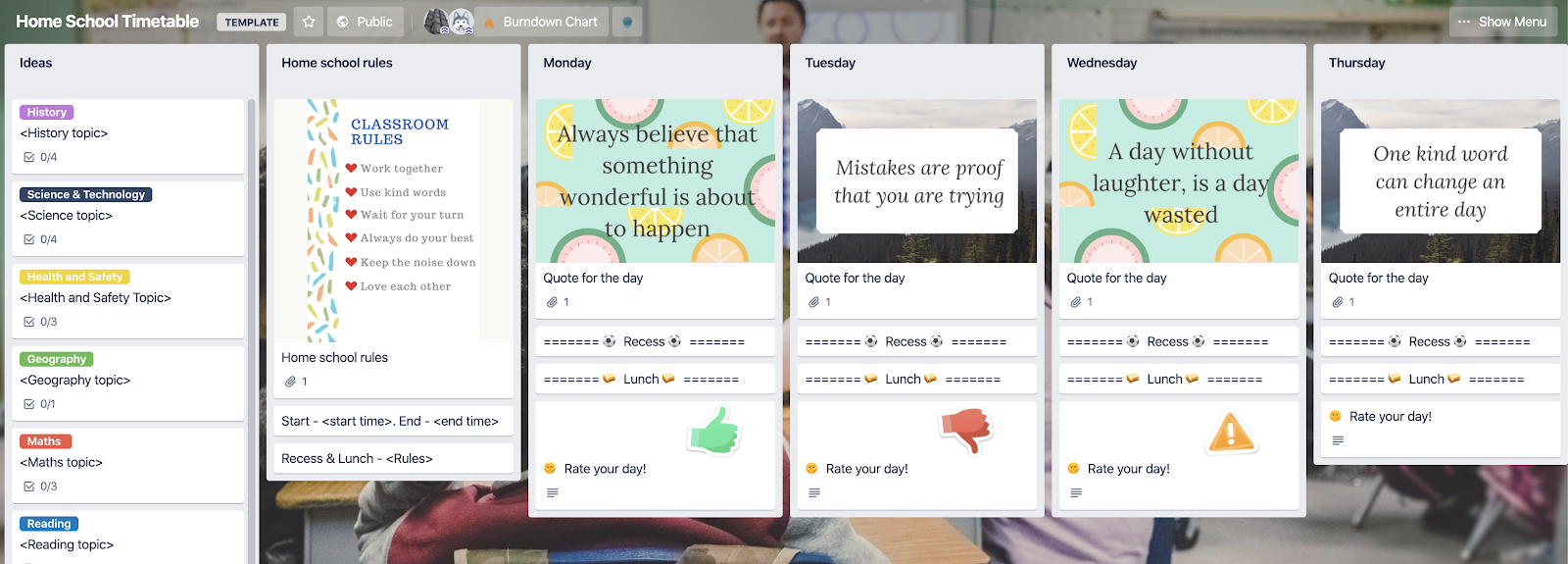
You can create a board of activities and print it off so your children always have ideas of what they can work on next. Plus it gives them an easy (and fun!) way to check things off when they’ve accomplished a task. Think of it as a digital gold star.
- Remote-Based Learning
Many teachers these days are finding themselves thrown into a remote learning environment. As if teaching wasn’t hard enough, they now have to manage new technology, video chats, schedules, digital files, and more. Trello is a great tool for organizing all these moving pieces in one place.
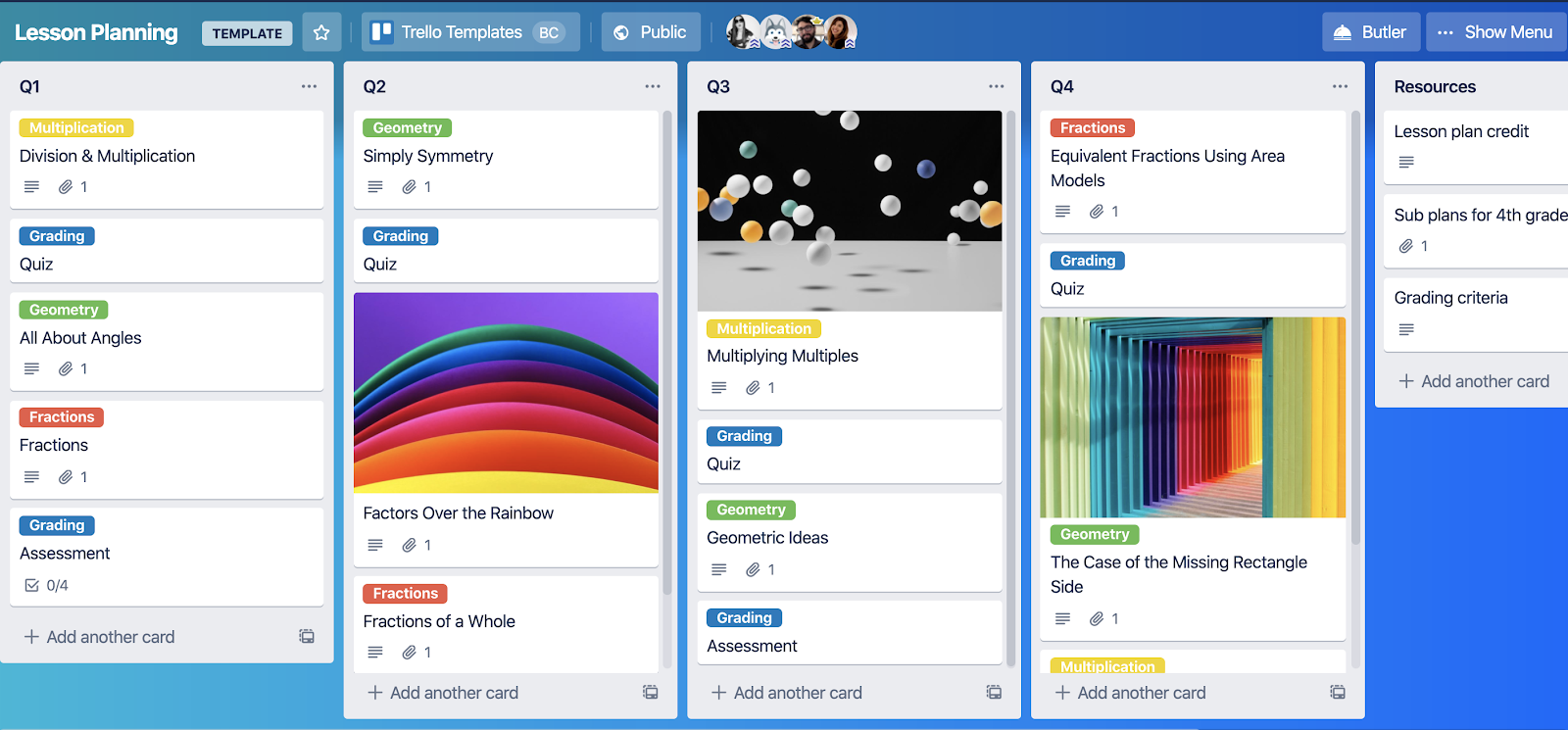
You can also easily plan out your syllabus or lesson plan in Trello to make sure you have everything you need, while also giving you the flexibility to move it around as schedules inevitably change over a semester.
Use cards to describe what you’re teaching and attach relevant links and a checklist so you have all the materials you need for a lesson at your fingertips. You can even use the card comments feature to add any notes after class and help you reflect on what to change for the next time you teach that lesson.
- Coordinate With Co-Teachers
If you’re leading classes with another teacher, it’s important to keep everyone on the same page, or board! Collaborating with others is as simple as adding someone to a board.
“You can assign cards to different people, so, for example, I would be assigned the “class prep” and “after class” for Tuesday, and my co-teacher the same cards for Wednesday. This also helps us share the prep and grading of major assignments.”
- Resource Organizer
If you’re a subject matter expert (or just really good at finding resources on the internet), you can use Trello to create a resource board.
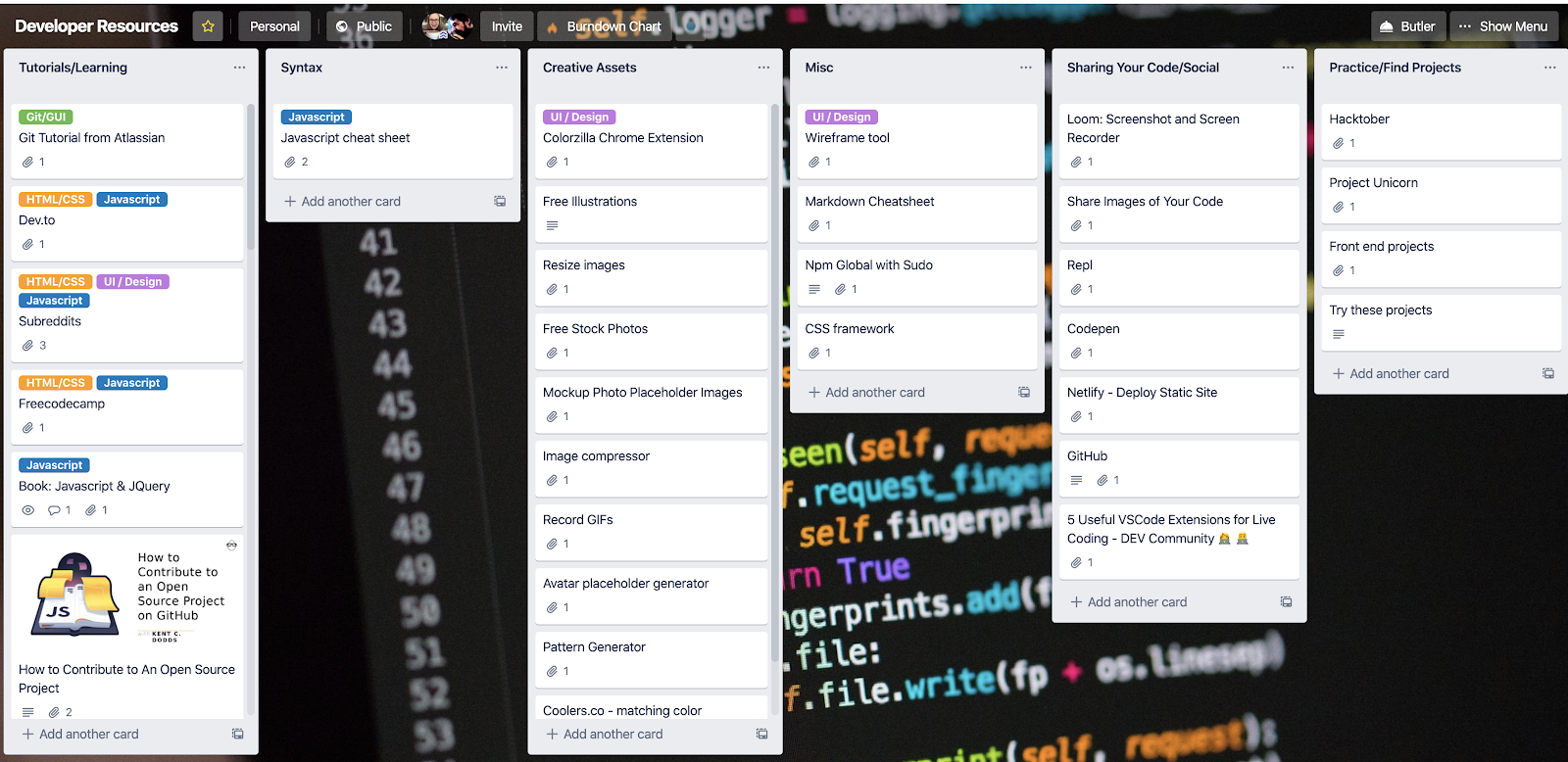
Use lists to identify different types of content or categories, and then use labels to give any additional information you need. Trello’s card attachment feature makes it easy to add PDFs, links, Google docs, or anything else you find to a card. It’s easy to attach multiple items, so when you find more than one resource on a specific subject, you can group it together on the same card.
- Student Assessment Data
Gone are the days of keeping track of papers and sticky notes about student performance. You can group it all in one place and make it easy to review with parents. You can even use the checklist feature to add goals, milestones, and deadlines.
- Staff Meeting Agenda
Spend the bulk of your day in meetings?
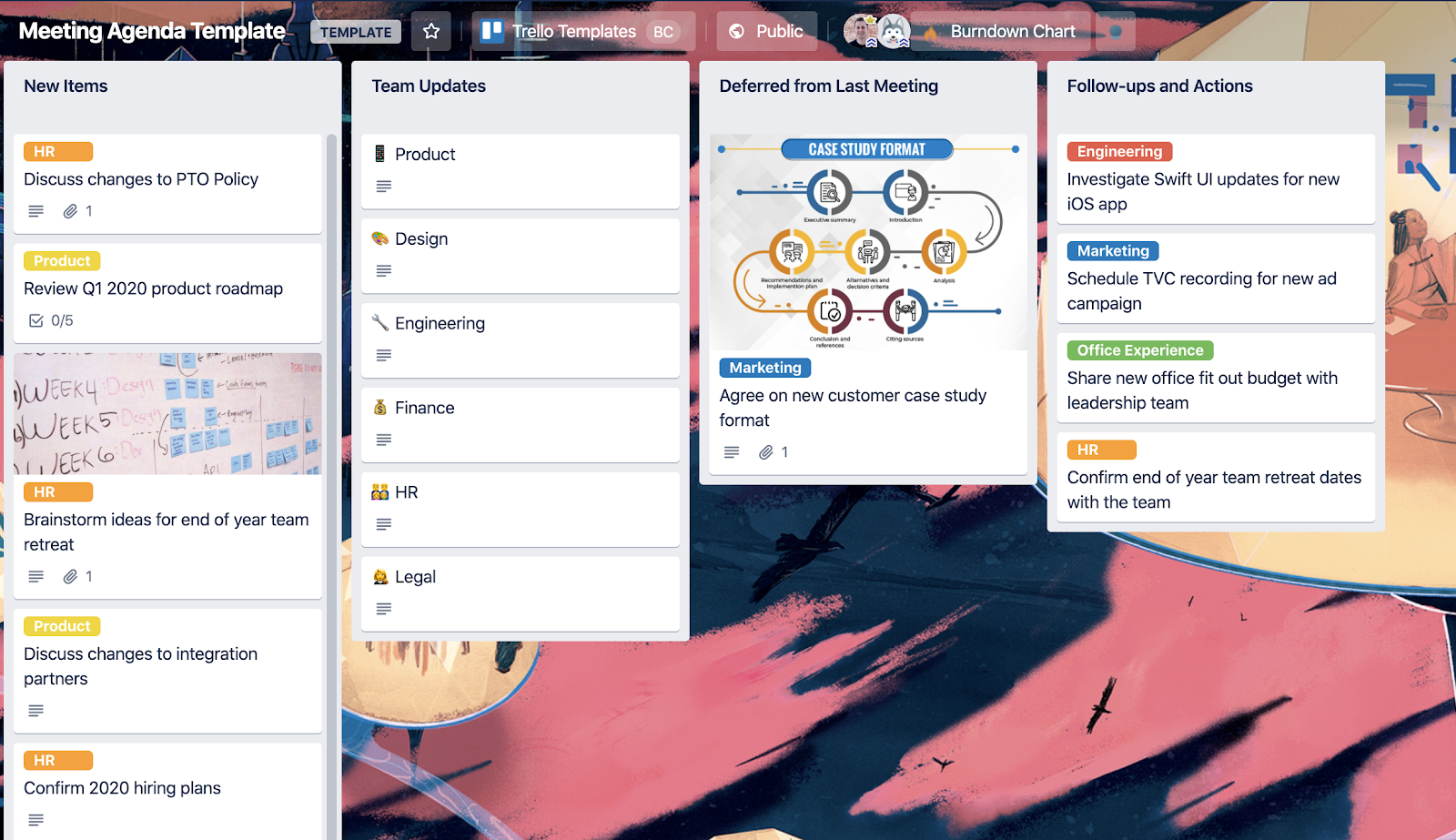 Teachers can use Trello to organize staff meeting agendas. Each card is an item to review and discuss during the meeting, and you can designate someone to take notes on the card. You can create action items by assigning members, due dates, and checklists to a card.
Teachers can use Trello to organize staff meeting agendas. Each card is an item to review and discuss during the meeting, and you can designate someone to take notes on the card. You can create action items by assigning members, due dates, and checklists to a card.
- Communication with Parents
It’s not just your students you spend time keeping organized, but the parents too! Communication with parents is important for your sanity and the success of your student, so let Trello help you make it as easy as possible.
“Add every parent in your class and use it to post homework assignments for the week or month. You can post reminders associated with each assignment, checklists to help kids make the most of their homework time, links to helpful videos or other resources, ideas for extension and differentiation, extra copies of the assignment in case someone’s dog eats it…”
- Safety Protocols Resource
Another way teachers can use Trello is by creating a single board that neatly organizes all the information teachers might need in emergency situations. You can organize the lists by situations and have step by step cards detailing exactly what to do in those situations.
Instead of looking through handbooks or having to make a dozen calls, teachers can quickly react to a situation and ensure they have all the resources they need accessible.
Hopefully we’ve spurred a few ideas, but we’re just getting started. You can find more ideas in the Trello templates gallery under Education and in our roundup of teacher boards for the classroom.
SOURCE: Trello
